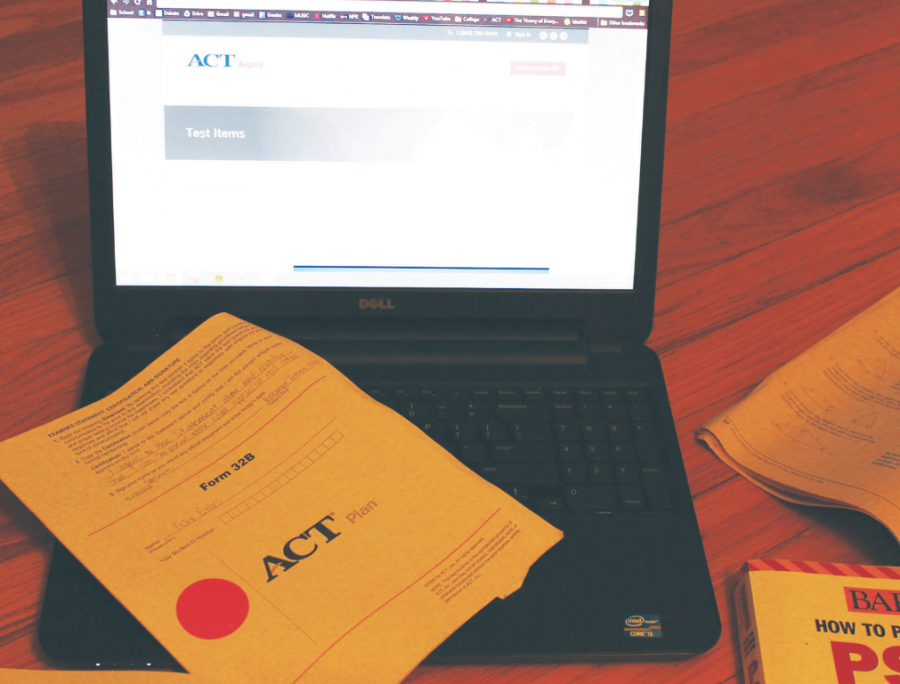Reactions to the ASPIRE
January 27, 2015
CHS sophomore Ben Schneider stared helplessly at his computer as he watched the clock in the corner of the screen count down his remaining time. Schneider was in the middle of the ASPIRE test, a practice ACT, and was waiting as his next question loaded at a sluggish pace.
“Between questions the computer would freeze up and the clock would keep counting,” Schneider said. “Most if not all of the other people in my room were facing similar problems, and we all ran out of time before we were able to finish all of the questions.”
Counselor Joyce Bell explained that the new online ASPIRE test replaced the former paper and pencil PLAN and EXPLORE tests in a decision made by the ACT. “They developed an online option, which was really the only option they were offering for a while,” Bell said. “Some schools pushed back and said we need a paper and pencil version, but by then the cost was too much.”
Schneider was not the only sophomore who became frustrated with the online format of the ASPIRE. In some cases, technical difficulties delayed the start of the tests as much as 30 minutes, forcing some students to forego their breaks.
Aside from technical difficulties, many students became frustrated at the online nature of the test. Students complained of headaches and dry eyes from staring at a computer screen, as well as finding it more difficult to type answers, rather than handwriting them.
Some of the new features of the ASPIRE, including questions with drag-and-drop answers, created confusion and annoyance among students.
“I’ve spent three or four years having a paper and circling answers that I like. The ASPIRE was abnormal and the muscle memory wasn’t there,” Schneider said.
Other features meant to be helpful, like the countdown clock, agitated students into a state of panic. Even students that did not feel stressed did feel that the unfamiliar nature of the test impacted their scores.
“Maybe it’s just in my head, but I feel like I performed worse on an online test than I would have on a handwritten test,” Schneider said
With so many difficulties, it seems doubtful that the ASPIRE is a positive step in standardized testing, yet the ACT website claims that the ASPIRE is “an affordable system that can be configured and integrated with school districts today and in the future.”
However, Bell says that while the ASPIRE is cheaper for the ACT company, it is unclear whether it is any cheaper for schools to administer. Although purchase of test booklets and rentals of tables were not necessary with the ASPIRE, CHS had to hire additional proctors as well as count out individual tickets that went with every test.
Although the overall cost of the ASPIRE is unclear, it is apparent that the ASPIRE is more difficult to administer. While the PLAN test had always been done in one day, the ASPIRE test took up two days, creating a larger disruption in classes.
Bell explained that the reason for disruption was because the testing had to take place in two separate shifts, as the bandwidth of Clayton’s computer system could not handle all students at once.
However, CHS is lucky to have its current computer system, as many schools are less fortunate. “I’ve talked to other school districts who have even fewer computers than we do, and they have really struggled with figuring out how to make some of these online options available,” Bell said.
Also, students at lower income schools have had less experience working with computers. “In other places where they don’t have the same advantages, what does that do?” Bell said. “I’m not sure, but I would think that it would give an unfair advantage to students who have had more access to the technology.”
Despite the many flaws with the ASPIRE, standardized tests moving to an online format seems inevitable. Rumors have surfaced that the ACT test is planning to transition to an online format, with other tests soon to follow. “I think that within the next five years, online will be the way of the future,” Bell said.



